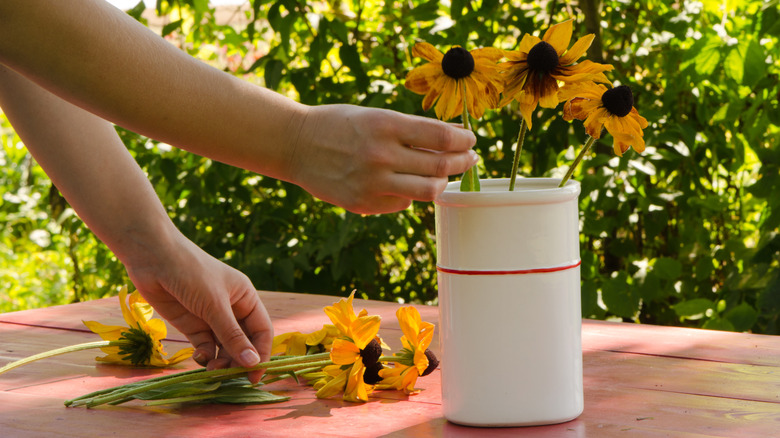Black-eyed Susans are a popular garden perennial that come back to bloom each year. These pretty wildflowers are members of the sunflower family, and they bloom in autumn and late summer with a golden daisy look. You can propagate your black-eyed Susans by dividing the patch and planting part of it elsewhere in your garden, giving you more beautiful blooms across your yard. But the best time to do it is when growth is not active. This means it’s best to divide your black-eyed Susans in early spring, before the flowers begin to grow back.
Another good rule of thumb is to divide your black-eyed Susans (and any other perennials you may have in your garden) every three to four years in order to slow down spreading. This will give your plants the best chance to grow to their full potential with healthier blooms flowering each year. You can encourage a second bloom in late fall if you cut them back, although it will be a more modest display.
How to divide and re-plant black-eyed Susans
To divide black-eyed Susans, you will need large and small garden forks, a sharp knife, a shovel, and garden gloves. Begin by digging deeply with your large fork around the patch to help loosen the roots, while using the small fork for tighter areas. Next, pull the patch away from the ground and use the sharp knife to divide it by cutting the plant into smaller root balls. Then, take your divided sections and dig holes to plant them in other areas of your garden. The holes should be larger than each root ball, but not too deep as this can cause the crown to rot and hinder blooming. Add some compost to the bottom of each one and mix with native soil before placing the root ball in. Check that the plant sits level at the surface as it did previously.
Finally, press the soil around the plants firmly with your gloved hands to get rid of any air pockets and level the soil. Spread mulch around the plants to protect them, as this will help the soil retain water and prevent it from becoming compacted. Finish by watering well.
Why should you divide your black-eyed Susans?

Because black-eyed Susans are self-seeding, they spread themselves quickly, making them prone to overcrowding. Dividing this perennial is important in order to avoid the flowers having to compete for nutrients — by making space for them to grow, you’ll get stronger and healthier plants. But because black-eyed Susans are such prolific growers, if you want to prevent the plants from spreading altogether in certain areas of your garden, you’ll also need to dig up their rhizomes completely.
Dividing black-eyed Susans also gives you more of them! It’s a free way to add more flowers to the yard — no trip to the plant nursery required. If you have too many plants for your garden after dividing, why not replant the extra clumps of black-eyed Susans in pots for your porch or sunroom instead? Alternately, display some cut flowers in a vase to enjoy indoors.



